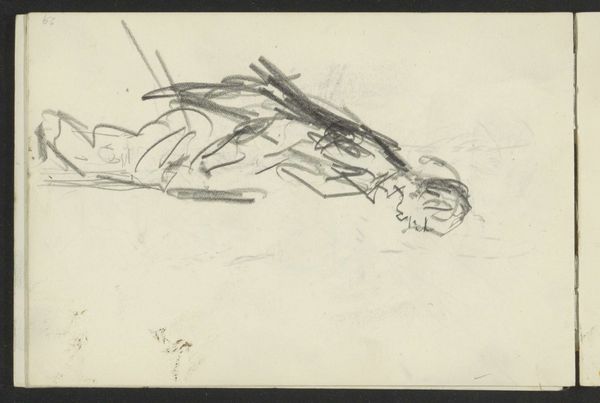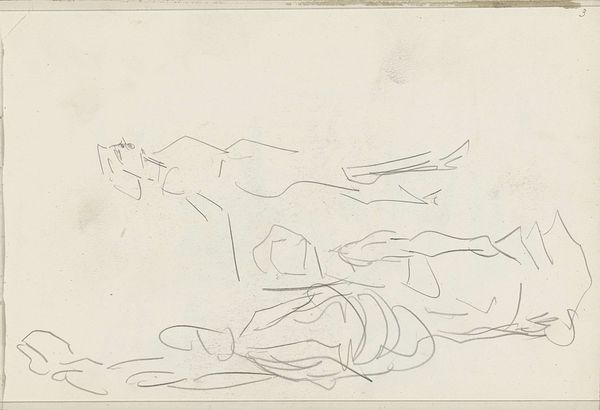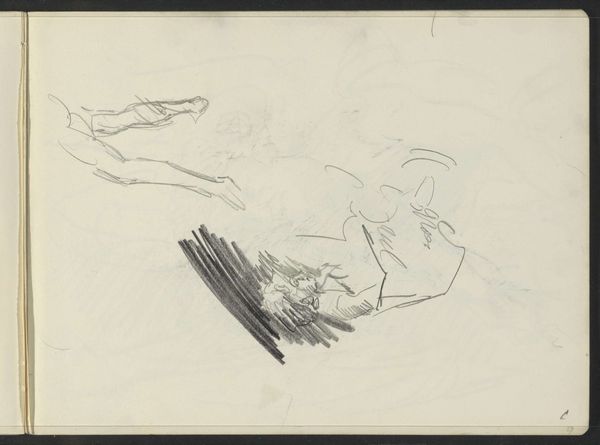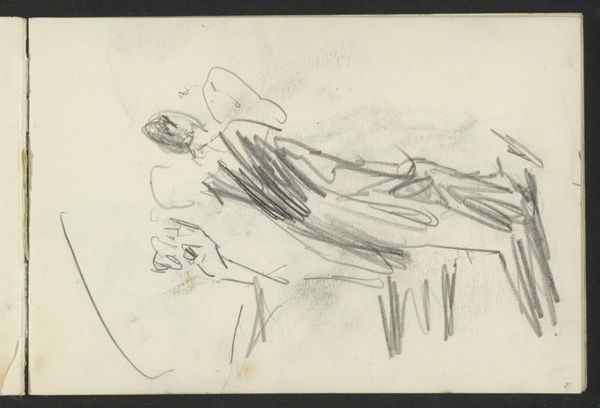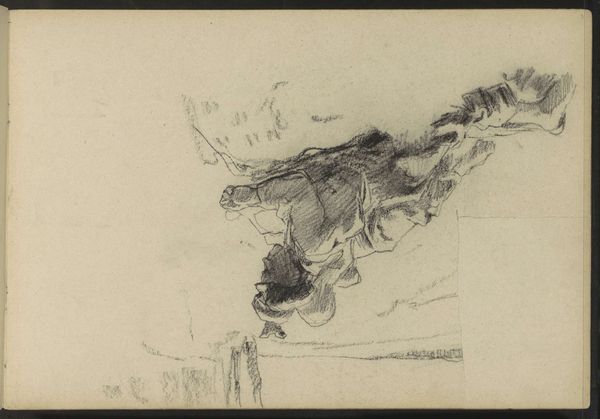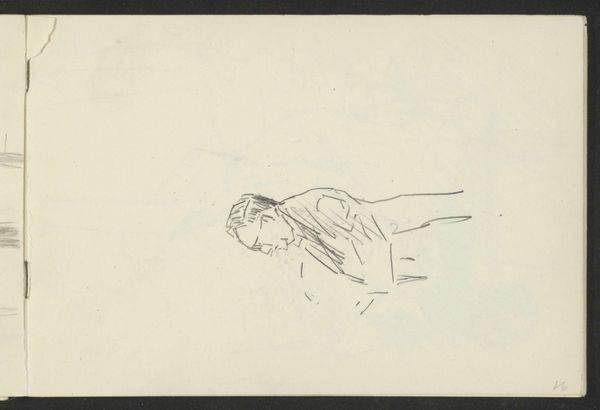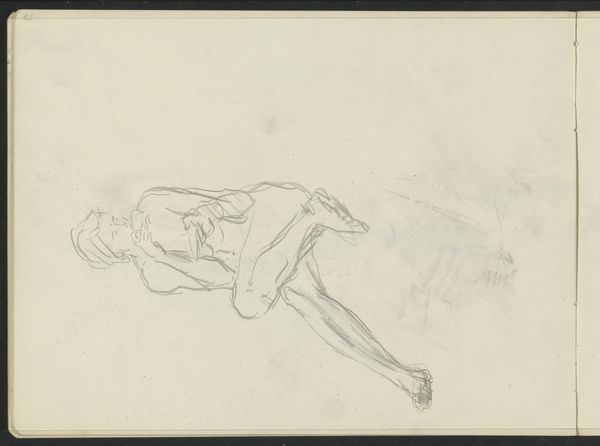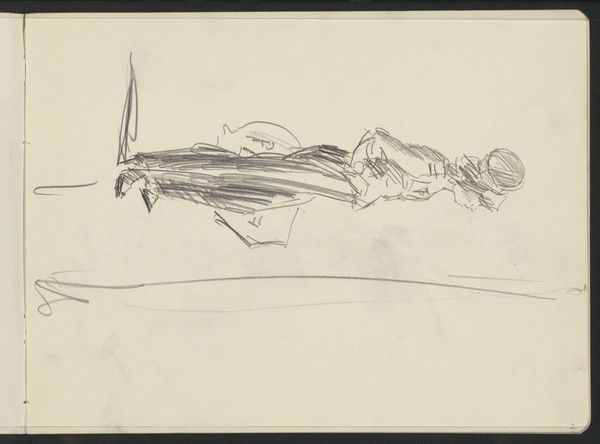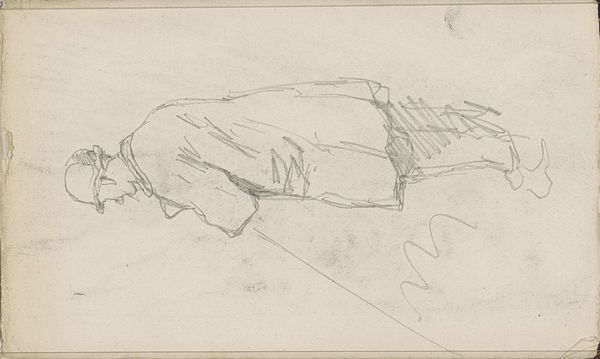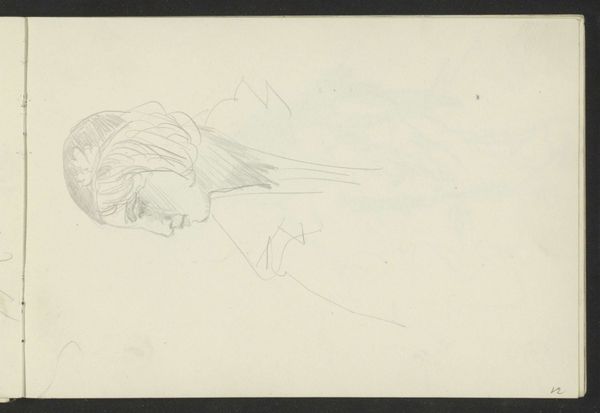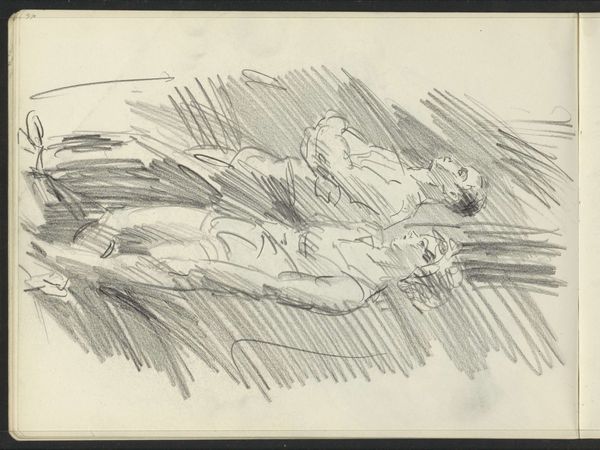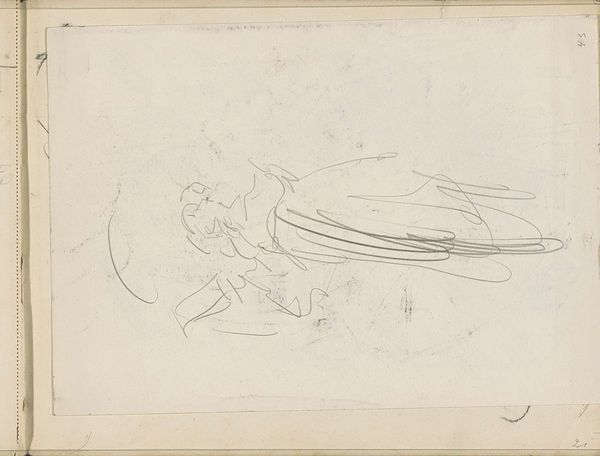
Copyright: Rijks Museum: Open Domain
Editor: This is "Standing Man with a Hand in his Side" by Isaac Israels, dating from around 1915 to 1925. It’s a pencil drawing, and it has a very preliminary feel – almost like a study. What do you make of this quick sketch? Curator: It strikes me as an exploration of pose and confidence. Notice how the simple gesture – a hand assertively placed on the hip – instantly conveys a certain presence. This gesture echoes across time. Do you see a figure of authority? Editor: I do. There’s a casualness, but also something self-assured in his posture. I hadn't really focused on how that gesture speaks volumes. What’s particularly fascinating is how Israels captures it with so few lines. Is that common? Curator: Absolutely. Consider, what other visual elements contribute to that sense of assurance? The artist isn't just drawing a man, they are imbuing him with symbolic weight through that single, recurring action. You find the pose echoed in political posters, historical paintings… think of the leaders and heroes adopting similar stances. This is a study on visual language. Editor: So, the meaning isn't just in the figure, but in how that pose resonates through cultural memory. Curator: Precisely. Think of how certain colours, objects, or gestures gain power through repeated use. This sketch captures that moment of creation, when an artist intuits the power of a simple symbol. It is an interesting early conceptual point from the artist. Editor: I never thought about sketches holding so much depth, this really illuminates how symbols evolve and endure. Curator: And how artists consciously, or unconsciously, tap into that collective visual vocabulary. I find this is especially relevant and visible in early sketches, as we see them coming to life.
Comments
No comments
Be the first to comment and join the conversation on the ultimate creative platform.
